A standard 1961 nickel from Philadelphia is worth 5 cents circulated or $1-$3 uncirculated. The 1961-D Denver mint nickel is worth 5 cents circulated but can reach $5 to $6,000+ uncirculated, especially high-grade “Full Steps” specimens worth over $10,000 when certified. Key errors include the 1961-D repunched mint mark, where the “D” was stamped multiple times, significantly increasing value depending on clarity and grade. The 1961-D’s high value stems from weak strikes caused by worn dies, making well-preserved examples rare and valuable to collectors.
That handful of nickels from 1961 sitting in your change jar might contain a hidden treasure worth thousands of dollars. While most 1961 Jefferson nickels are worth just their face value, specific varieties—particularly those from the Denver Mint with pristine details—have sold for up to $6,000 at auction. Understanding what separates a common five-cent piece from a valuable collectible can turn pocket change into a significant payday.
What Makes 1961 Nickels Valuable
The 1961 Jefferson nickel was produced in massive quantities at two facilities: the Philadelphia Mint and the Denver Mint. Philadelphia struck 73,640,100 coins without a mint mark, while Denver produced 229,342,760 pieces marked with a “D” on the reverse near Monticello’s base. Despite these high mintage numbers, certain characteristics dramatically increase their worth.
The key value driver for 1961 nickels isn’t rarity in the traditional sense—it’s preservation quality and specific strike characteristics. Most coins from this era entered circulation immediately, suffering wear from decades of handling. The few that survived in pristine condition, particularly with sharp architectural details, command premium prices from collectors seeking perfect examples for their sets.
The United States Mint experienced die production challenges in 1961, especially at the Denver facility. Dies used to strike coins wore out faster than normal, creating weakly struck coins that lacked fine details. This manufacturing issue makes well-struck examples exceptionally scarce and valuable today.
1961 Philadelphia Nickel Values (No Mint Mark)
Philadelphia nickels from 1961 lack a mint mark entirely—a characteristic of coins from this facility until 1980. These represent the lower mintage of the two varieties but remain common in most grades.
Standard Circulated Condition: These nickels are worth exactly five cents. You’ll find them frequently in circulation, showing typical wear from hand-to-hand transfer over six decades. Signs of circulation include smoothed details on Jefferson’s hair, faded lettering, and worn steps on Monticello.
Uncirculated Examples: Coins that never entered circulation show their original luster and complete design details. Heritage Auctions records show these typically selling between $1 and $3 for average uncirculated specimens. A coin graded Mint State-63 (MS-63) by Professional Coin Grading Service might bring $2, while an MS-65 example could reach $8 to $12.
Here’s the value breakdown by grade:
| Grade | Condition Description | Value Range |
|---|---|---|
| Good-4 | Heavy wear, readable date | $0.05 |
| Fine-12 | Moderate wear, major details visible | $0.05 |
| Extremely Fine-40 | Light wear on high points | $0.05 |
| About Uncirculated-50 | Slight wear, most luster remaining | $0.50 – $1 |
| MS-60 | Uncirculated, many contact marks | $1 – $2 |
| MS-63 | Uncirculated, fewer marks | $2 – $3 |
| MS-65 | Gem quality, minimal imperfections | $8 – $15 |
The Philadelphia mint produced these coins with generally better strikes than Denver, though truly exceptional “Full Steps” examples—where all five or six steps of Monticello are completely separated and sharp—remain elusive. A 1961 Philadelphia nickel graded MS-66 with Full Steps sold for $288 at a Stack’s Bowers auction in 2022, demonstrating the premium collectors pay for superior strike quality.
1961-D Denver Nickel: The $6,000 Variety
The Denver Mint mark “D” appears on the reverse, positioned to the right of Monticello. This variety presents the greatest value opportunity for collectors examining 1961 nickels. While circulated examples remain worth face value, uncirculated specimens span an enormous value range based on grade and strike quality.
Circulated 1961-D Nickels: Despite the higher mintage, worn examples have no premium value. The 229 million coins produced ensure abundant supply for coins showing any circulation wear. These remain worth exactly five cents regardless of wear level.
Uncirculated 1961-D Nickels: This category reveals dramatic value differences. Entry-level uncirculated coins (MS-60 to MS-62) typically sell for $5 to $15. As condition improves, values jump significantly:
- MS-63: $20 – $40
- MS-64: $50 – $125
- MS-65: $200 – $850
- MS-66: $1,500 – $6,000
A 1961-D Jefferson nickel graded MS-66 by Numismatic Guaranty Company sold for $5,875 through Heritage Auctions in January 2023. Another MS-66 example brought $4,700 in a GreatCollections sale the same year. These prices reflect competition among registry set collectors pursuing the finest known examples.
The Full Steps Designation: The reverse of Jefferson nickels features Monticello, Thomas Jefferson’s Virginia estate. The building’s front steps should show as five or six distinct, complete lines. Die wear and weak strikes frequently caused these steps to blur together, especially on Denver coins from 1961. Coins displaying complete step separation receive a “Full Steps” (FS or 5FS/6FS) designation from grading services.
Full Steps 1961-D nickels are extraordinarily rare. Experts estimate fewer than 100 exist across all grades. A 1961-D graded MS-65 with Full Steps sold for $10,800 at Heritage Auctions in 2021, while an MS-66 FS example could potentially exceed $15,000 based on comparable Jefferson nickel varieties.
Identifying the 1961-D Repunched Mint Mark Error
During 1961, Denver Mint workers occasionally punched the “D” mint mark into working dies improperly, requiring a second punch to correct placement. This created doubled or offset mint marks visible under magnification—a variety collectors call “Repunched Mint Mark” or RPM.
Visual Characteristics: Examine the “D” mint mark with a 10x magnification loupe or jeweler’s eyepiece. Look for these telltale signs:
- A faint second “D” outline visible above, below, or to either side of the primary mint mark
- Thickening along one edge of the “D” where the second punch partially overlapped
- A shadow or trace of the first punch position showing to the left of the final “D”
The most prominent 1961-D RPM variety shows clear doubling to the west (left) of the primary mint mark. Under magnification, you’ll observe what appears as a partial second “D” extending leftward from the main punch.
Value Assessment: Repunched mint mark varieties add premium value, though exactly how much depends on the clarity and dramatic nature of the doubling. A minor RPM on a circulated 1961-D might add $2 to $5 in value—interesting to variety collectors but not transformative. However, a strong, easily visible RPM on a high-grade uncirculated coin could add 20% to 50% to its base value.
For accurate attribution and valuation, submit suspected RPM varieties to PCGS or NGC for professional grading and variety designation. Their experts will determine if the doubling qualifies as a recognized variety and note it on the certification label, substantially increasing marketability to specialized collectors.
Additional Error Varieties Worth Finding
Beyond repunched mint marks, several other manufacturing errors occasionally appear on 1961 nickels, each adding collectible value.
Die Cracks and Cuds: As dies aged and developed metal fatigue, cracks formed on their surface. These cracks created raised lines on struck coins. When a piece of die broke away entirely, the resulting coin showed a raised, unstruck blob called a “cud.” A 1961-D with a prominent cud on the obverse rim sold for $85 in 2023, while minor die cracks typically add $5 to $20 depending on size and location.
Off-Center Strikes: When a planchet (blank coin disc) doesn’t align properly with the dies during striking, the design appears partially off the coin’s edge. The value of off-center errors depends on the percentage of misalignment and whether the date remains visible. A 1961-D struck 15% off-center with full date might bring $75 to $150, while a dramatic 50% off-center error could reach $300 to $500.
Struck Through Errors: Foreign material occasionally landed on a planchet before striking—grease, cloth fibers, or other debris. The resulting coin shows weakened or missing design elements where the obstruction blocked metal flow. A 1961 Philadelphia nickel with a struck-through grease error covering part of Jefferson’s portrait sold for $45 in a 2022 online auction.
Double Die Errors: Though not officially recognized for 1961 nickels, minor hub doubling occasionally appears on design elements. Examine “LIBERTY,” the date, and “MONTICELLO” for subtle doubling of letters. Confirmed doubled dies command significant premiums, though authentication by major grading services is essential before claiming this valuable error type.
Professional Grading: When It Makes Financial Sense
Submitting coins for third-party grading through PCGS or NGC costs between $20 and $65 per coin depending on service level and membership status. This investment only makes sense when potential value significantly exceeds grading costs.
Grade Your 1961-D If: The coin appears completely uncirculated with sharp details and strong luster. Use this decision matrix:
- If you believe the coin grades MS-64 or higher, grading is likely worthwhile (potential value $50+)
- If the coin shows possible Full Steps on Monticello, absolutely get it graded (potential value $500+)
- If you’ve identified a clear repunched mint mark on an uncirculated coin, grading will authenticate and add value
Skip Grading If: Your coin shows any circulation wear or you’re certain it grades MS-63 or lower without Full Steps. The $2 to $40 value range for these grades doesn’t justify grading expenses. Similarly, circulated 1961 Philadelphia nickels have insufficient value to warrant the cost regardless of grade.
Professional grading provides authentication, precise grade assignment, and protective encapsulation. For high-value coins, the third-party certification dramatically improves marketability and typically allows 20% to 40% higher selling prices compared to raw (ungraded) examples.
Maximizing Your 1961 Nickel’s Value When Selling
If you’ve discovered a valuable 1961 nickel, choosing the right sales venue significantly impacts your return. Different markets suit different coin values and seller experience levels.
For Coins Worth Under $50: Local coin shops offer immediate payment and convenience. Expect offers at 60% to 80% of retail value—they need margin for resale. Online marketplaces like eBay reach broader audiences and typically yield better prices, though selling fees (around 13% total) and shipping costs reduce net proceeds.
For Coins Valued $50 to $500: Online specialized coin marketplaces such as GreatCollections or APMEX’s buying programs provide competitive offers with expert evaluation. These platforms cater specifically to collectors and offer better pricing than general venues. Alternatively, listing on collector forums or the PCGS/NGC registry sales sections connects you directly with serious buyers.
For Premium Coins Worth $500+: Major auction houses including Heritage Auctions, Stack’s Bowers, and Legend Rare Coin Auctions achieve the strongest results for high-grade and rare variety coins. Their auctions attract deep-pocketed collectors and investors willing to pay top dollar. Consignment fees typically run 10% to 20%, but the competitive bidding environment often produces prices exceeding individual sale estimates by 15% to 30%.
Timing matters for auction consignments. Major shows like the American Numismatic Association World’s Fair of Money or Florida United Numismatists convention auctions attract the most bidders and typically generate the highest prices. Consign coins 3 to 4 months before these events to ensure inclusion in premier auction catalogs.
Building Your Jefferson Nickel Collection Strategy
Whether you’ve found a valuable 1961 variety or you’re developing a broader collection strategy, Jefferson nickels offer accessible entry into numismatics with significant upside potential. The series spans 1938 to present, providing countless collecting approaches.
The Full Steps Challenge: Assembling a date-and-mintmark set of Jefferson nickels with Full Steps designation represents one of numismatics’ most demanding yet rewarding pursuits. Many dates—particularly 1950s and early 1960s Denver issues—have populations under 50 coins in Full Steps across all grades. This rarity creates strong value appreciation as completion-driven collectors compete for available examples.
Variety Hunting: Repunched mint marks, doubled dies, and other varieties exist throughout the Jefferson series. The 1961-D RPM is just one of hundreds of documented varieties. Variety specialists build collections around these manufacturing anomalies, often purchasing circulated examples affordably while enjoying the detective work of discovery.
Registry Set Competition: PCGS and NGC maintain online registry sets where collectors compete to assemble the finest-graded collections. Registry participation drives demand for top-grade coins, supporting strong prices for MS-66 and MS-67 examples. Even if you’re not competing, understanding registry dynamics helps predict which coins will maintain or increase in value.
Start by examining every 1961 nickel you encounter—circulation finds still occur regularly. Check coinstar reject slots, bank rolls, and inherited collections. One collector discovered an MS-65 Full Steps 1961-D worth $8,500 in a bag of coins purchased at an estate sale for $20. Your valuable variety might be closer than you think.
You may be interested:
- 1859 Indian Head Penny Coin Value Complete Errors List And No Mint Mark Worth Guide For Collectors
- 1911 V Nickel Coin Value Guide Complete Errors List And No Mint Mark Worth Today
- 1902 Dime Coin Value Complete Errors List With O S And No Mint Mark Worth Guide
- 1788 Quarter Coin Value Complete Guide Errors List And D S P Mint Mark Worth Revealed
- 1776 To 1976 Bicentennial Half Dollar Coin Value Complete Errors List And What Your D S And No Mint Mark Coins Are Actually Worth
- 1990 Penny Coin Value Errors List How D S And No Mint Mark Pennies Are Worth Thousands Of Dollars

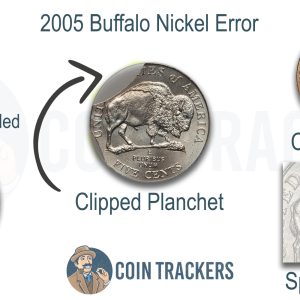
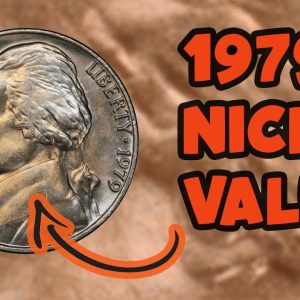
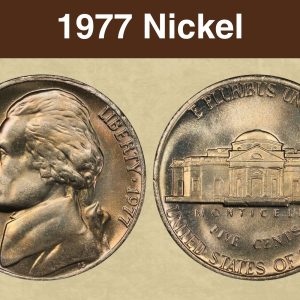
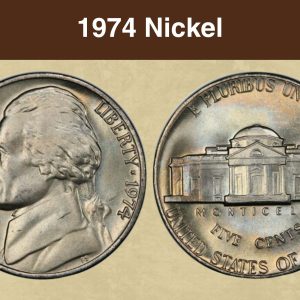
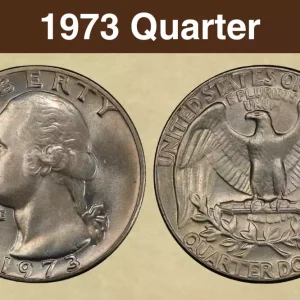
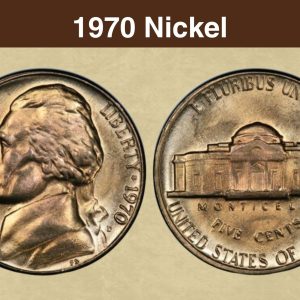
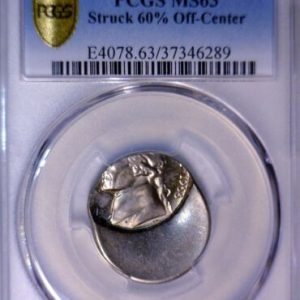
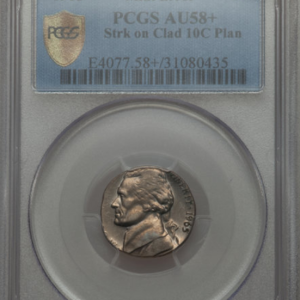
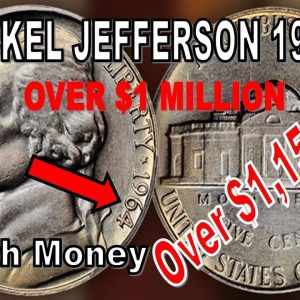
Is a 1961 nickel with no mint mark worth anything?
A 1961 nickel with no mint mark is a Philadelphia Mint coin and is generally worth its face value of 5 cents in circulated condition, but uncirculated coins can be worth $1 to $3 or more. Higher values are found for coins in exceptional condition, and extremely rare mint errors, such as those with significant imperfections or highly desirable “full steps” on the reverse, can be worth hundreds or even thousands of dollars.
What nickel error to look for?
Key nickel errors to look for include doubled dies, where design elements are doubled due to die strikes, off-center strikes, where the coin is struck outside its intended position, and mint mark errors, such as doubled or missing mint marks. Other valuable errors are speared bison on 2005 nickels, the 1943 double die Jefferson nickel, and 1937-D Buffalo nickel three legs.
What’s the highest price paid for a 1961 nickel?
Value of 1961-D Jefferson Nickel The five step coins are rare, and can even reach unreal prices of $10,000 or more if certified FS. This date is a good coin to go after if you are very optimistic.